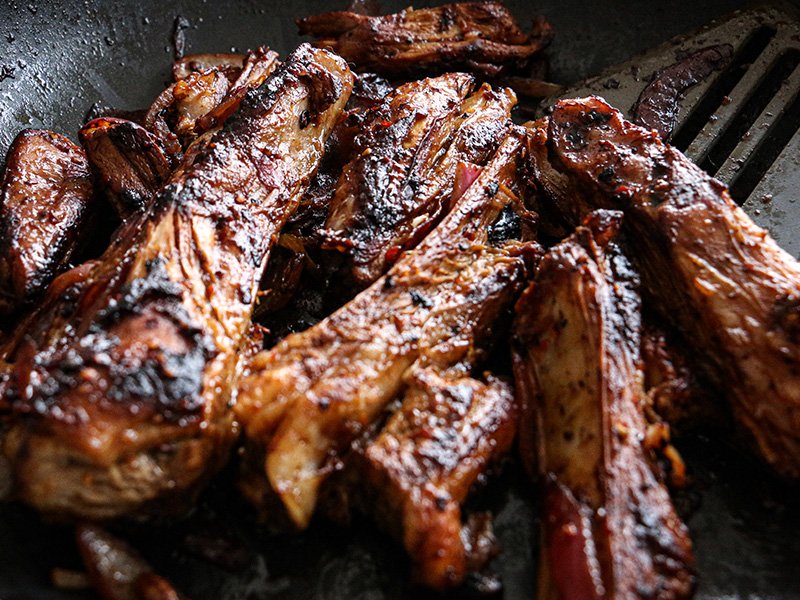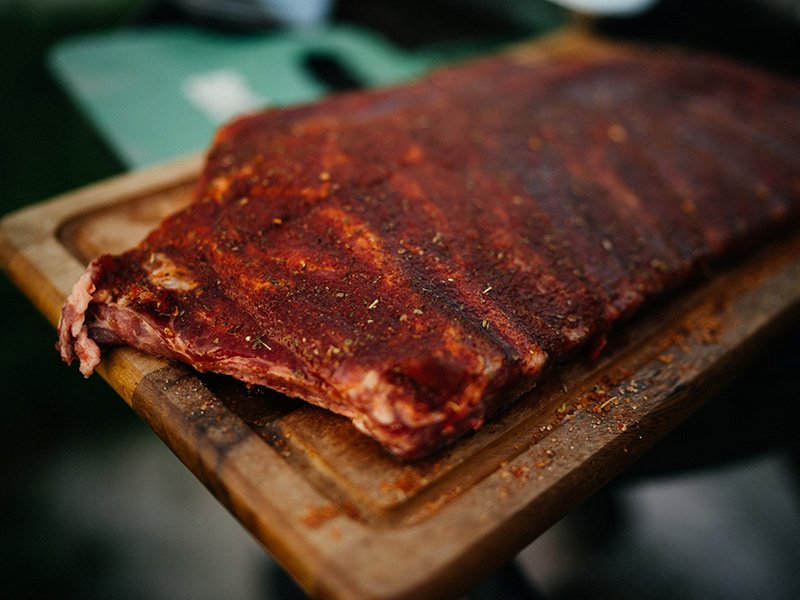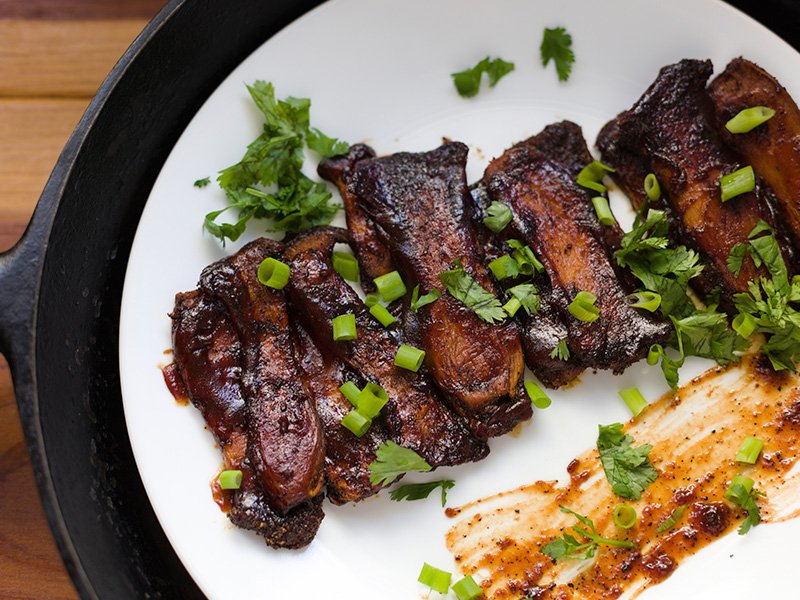Prepare to savor the succulent world of baby back ribs while uncovering the hidden nutritional gems! These mouthwatering meaty delights, beloved by carnivores far and wide, offer more than delectable flavor. In this blog post, we’ll look closer at the nutritional aspects of baby back ribs, revealing their actual value in healthy eating. So, hold a napkin and get ready to relish every bite, all while nourishing your body with baby back ribs nutrition – let’s dive right in!

What Are Baby Back Ribs?
Before we explore their nutrition, let’s understand what baby back ribs are. These ribs are a specific pork cut originating from the upper part of the pig’s ribcage, where the rib bones meet the spine. Their name comes from their smaller, shorter size than spare ribs, making them highly sought after for their tenderness and generous meat-to-bone ratio. Baby back ribs nutrition is prized for their marbling of fat, which melts during cooking, resulting in exceptionally moist and flavorful meat. They possess a rich, meaty taste with a hint of natural sweetness and a tender yet satisfyingly firm texture. Whether grilled, smoked, or oven-roasted, baby back ribs always shine with their delicious taste. Visually, these ribs typically curve with small bones along one side, and The meat clings closely to these bones but easily separates when cooked to perfection.
The Nutritional Value of Baby Back Ribs
Now, let’s delve into the nutritional value of baby back ribs. Beyond their mouthwatering taste, they offer essential nutrients that may surprise you. First and foremost, baby back ribs are an excellent source of protein. A three-ounce serving contains about 22 grams of protein, making it an ideal choice for those looking to increase muscle mass or maintain a balanced diet. In addition to protein, baby back ribs provide essential vitamins and minerals. They are rich in iron, zinc, and B vitamins like thiamin and
- These nutrients are crucial for energy production, immune function, and well-being. It’s worth noting that while baby back ribs contain some fat, most are unsaturated fats, which can be healthier for heart health when consumed in moderation. Cooking methods can also impact the nutritional profile. Opting for Grilling or baking instead of frying can reduce excess fat content while
Retaining flavor. So, when you savor those succulent baby back ribs, you’re not just treating your taste buds but also providing your body with valuable nutrients!
The Benefits of Eating Baby Back Ribs
Beyond their delicious taste, baby back ribs nutrition offers surprising health benefits that make them even more enticing. Here’s why you can enjoy these juicy delights without guilt:
High Protein Content: Baby back ribs are a superb source of protein, essential for tissue repair and overall growth.
Vitamins and Minerals: They contain vital nutrients like iron, zinc, vitamin B12, and selenium, contributing to oxygen transport, immune support, nerve cell health, and cellular protection.
Satiety: Baby back ribs’ rich flavor and satisfying texture can help curb cravings and keep you full longer, aiding in weight management.
Healthy Cooking Methods: Choosing more beneficial cooking methods like grilling or baking can preserve nutritional value while enhancing taste. So go ahead, relish those tender baby back ribs. The combination of high-quality protein, vitamins, and minerals makes them delicious and surprisingly beneficial for your health.
The Best Way to Cook Baby Back Ribs
To achieve rib perfection, consider the best ways to cook baby back ribs while balancing tenderness and smoky flavor. Here are some tips to help you get It’s just right:
Preparation: Start by removing the thin membrane from the underside of the ribs to allow seasonings and marinades to penetrate effectively. Season generously with a dry rub or marinade, then refrigerate for at least an hour to enhance flavor.
Cooking Techniques: Popular methods include low and slow smoking or slow-roasting at a low temperature for several hours until they fall off the bone tender. This allows ample time for flavors to develop.
Grilling: Opt for grilling over indirect heat by setting up your grill with one side having direct heat and the other without flames beneath it. Place your seasoned ribs on the cooler side, close the lid, and let them cook slowly.
Pressure Cooking: If you’re short on time, consider using a pressure cooker or Instant Pot®. These appliances can cook baby back ribs in under an hour without sacrificing tenderness or flavor.
Basting: Regularly brushing on flavorful barbecue sauce during cooking adds moisture and enhances taste.
Resting: Always let cooked baby back ribs rest before serving, allowing juices to redistribute for juicier meat. Experiment with different methods until you find your preferred way to create mouthwatering baby back ribs that tickle your taste buds!
Recipes for Baby Back Ribs

Ready to take your baby’s back ribs to the next level? Get prepared for these mouthwatering recipes that will leave you craving more:
Classic BBQ Baby Back Ribs: Season with paprika, garlic powder, salt, onion powder and pepper, then marinate and grill. Baste with BBQ sauce for extra flavor.
Asian-Inspired Baby Back Ribs: Mix Marinate in soy sauce, ginger, garlic, honey, and sesame oil. Grill or bake until caramelized, then serve with steamed rice and stir-fried vegetables.
Spicy Chipotle Baby Back Ribs: Create a rub with chipotle chilli powder, cumin, brown sugar, salt, and pepper. Slow cook in the oven, then broil for a charred finish.
Maple-Glazed Baby Back Ribs: Prepare a glaze with maple syrup, Dijon mustard, Worcestershire sauce, and apple cider vinegar. Coat the ribs generously, cook low-and-slow, and finish under a high-heat broiler for a caramelized glaze. These tempting recipes will elevate your baby’s back ribs experience to heights!
Conclusion
In this blog post, we explored the nutritional aspects of baby back ribs, revealing their value beyond their delicious taste. Baby back ribs offer high-quality protein, essential vitamins and minerals, and surprising health benefits. While they may not be the healthiest choice, they can be utilized in moderation as part of a balanced diet. Slow and low methods help achieve tenderness and flavor when cooking baby back ribs. Experiment with different methodologies to create the perfect mouthwatering ribs that suit your preferences. So, savor those tender baby back ribs, knowing you’re treating yourself to a delightful culinary experience with valuable nutritional benefits. Balance is critical, so pair them with healthier choices throughout your day. Enjoy every bite, and relish the culinary journey of baby back ribs nutrition!



1 thought on “Diving into the Nutritional Aspects: Baby Back Ribs Nutrition Uncovered”